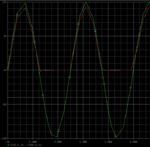lfx0828
Newbie level 4
Hi guys,
Recently I have studied some RF-rectifier papers.
As the topic said, I am curious about the efficiency of single-diode RF-rectifiers.
I think it seems like a half-circle rectifier circuit which means the efficiency should less than 50%.
But many papers said the efficiency can up to 70% even 90%.
So, is there anyone can give me an explanation about this?
Thanks in advance.


Recently I have studied some RF-rectifier papers.
As the topic said, I am curious about the efficiency of single-diode RF-rectifiers.
I think it seems like a half-circle rectifier circuit which means the efficiency should less than 50%.
But many papers said the efficiency can up to 70% even 90%.
So, is there anyone can give me an explanation about this?
Thanks in advance.


